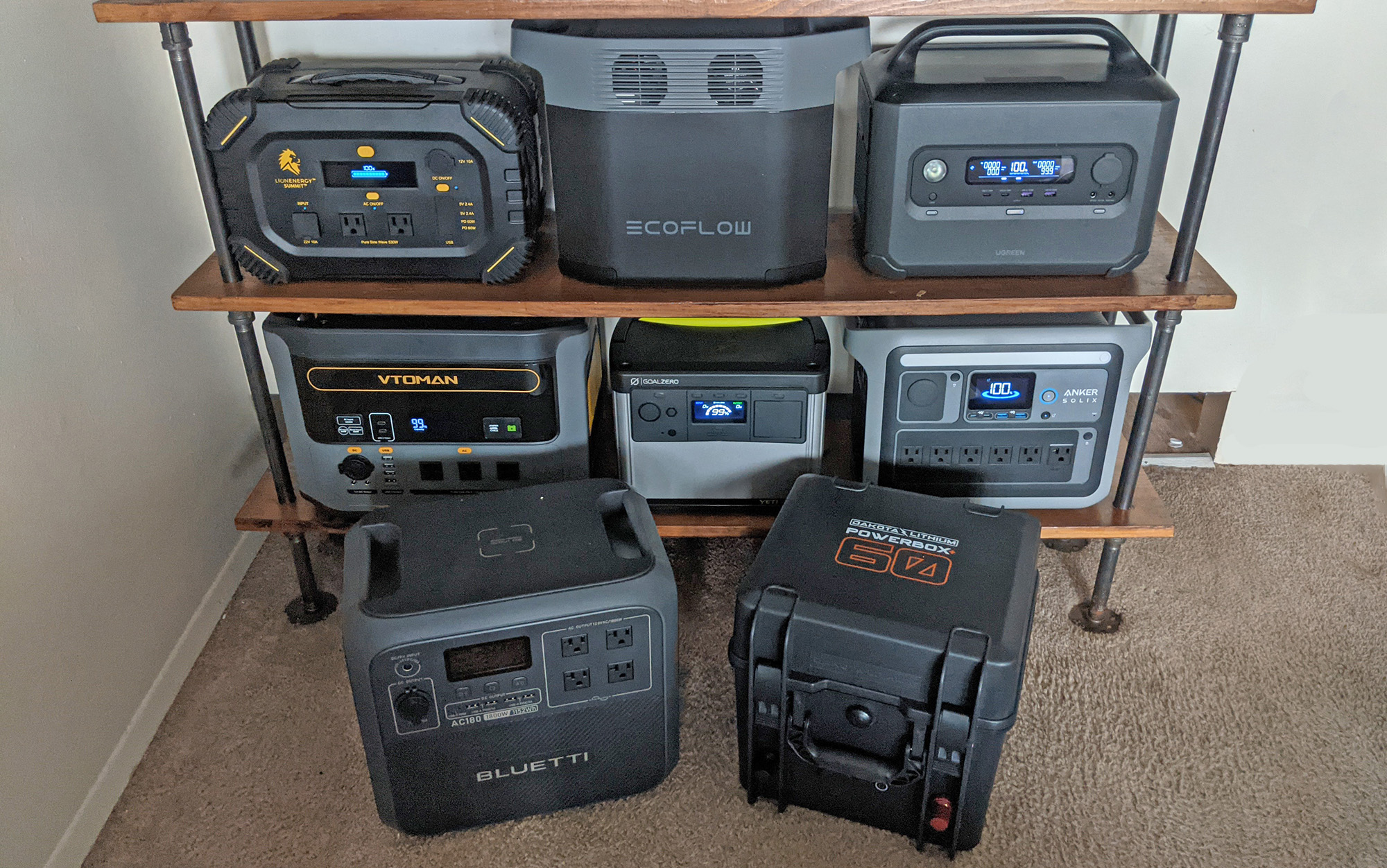Self-Defense Moves That Might Save Your Life Soon
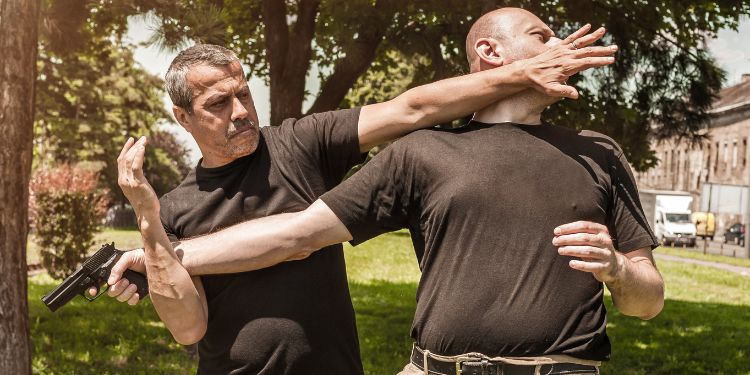
The world is becoming a more chaotic and dangerous place by the day. Because of the increasing uncertainty, the need for self-defence skills is becoming more of a necessity than ever before.
The concepts I will detail here will give you a good overview of what you should know and learn to maximize your survivability in a violent exchange.
Situational Awareness
You can be a black belt in every martial art, but if you have poor situational awareness, all your skills will be rendered moot with one good swing of a baseball bat. Regardless of where you are, you need to be aware of your surroundings. Solid situational awareness will let you avoid most situations which may lead to you having to defend yourself.
One good way to improve your situational awareness is to use the OODA Loop. This technique was developed by a U.S. Air Force fighter pilot named John Boyd. It is an acronym which stands for Observe, Orient, Decide, and Act.
Observe – What is happening around me? This is the Who, what, and where of your surroundings.
Orient – How does what’s going on around me affect my safety? What are your capabilities, training, fitness, current condition, and assets available to you. What are the potential threats that I am facing?
Decide – What am I going to do about it? Is escape possible? Is violence inevitable? Is there help available?
Act – Take action to stay safe.
Related: Self-Defense Weapons That Are Illegal in Your State. Do You Have One of Them?
 Using the OODA loop as a part of your daily routine is the best way to make it second nature.
Using the OODA loop as a part of your daily routine is the best way to make it second nature.
Regardless of where you are you should always have your head on a swivel and be assesing the situation around you.
Along with this, there are a few things you should always be doing:
- Do not walk around looking at your phone or with earbuds in.
- After parking your vehicle, do a 360-degree visual scan around the vehicle for threats.
- When pumping gas, keep your back to the car and your head on a swivel.
- Always trust your gut instincts. If something feels off, leave immediately.
- Don’t get drunk or high when out in public.
- Never walk into a room or building you don’t know how to run out of in an emergency.
- Be aware of what everyone around you is doing with their hands and feet. Watch for weapons, clenched fists, or shifting into a fighting stance.
- Always stay calm and polite regardless of the situation.
Good situational awareness is the best way to avoid having to defend yourself, but occasionally, there are times when you will be forced to act.
Legal Obligations
Before we continue and discuss defending oneself against attacks, you need to know and understand the laws that are in place in the jurisdiction that you live and work in. You also have an ethical and moral obligation to help anyone you hurt in the process of defending yourself.
Learning Martial Arts for Self-Defence
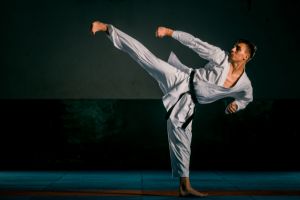 There are dozens of martial arts which you can learn to get the skills to defend yourself against an attacker.
There are dozens of martial arts which you can learn to get the skills to defend yourself against an attacker.
Regardless of what you choose, you need to have a mix of grappling and striking.
Related: 9 Things Not to Do in a Widespread Civil Unrest
Grappling can include judo, jiu-jitsu, or wrestling while striking can include boxing, kickboxing, Krav Maga, or even taekwondo. The reason that you need both styles of martial arts is so that you can fight effectively standing and on the ground. There is a good reason why UFC fighters learn grappling and that is because real fights often end up in close quarters where striking is ineffective.
The problem with learning a martial art is that you must practice regularly to keep your skills fresh and effective. It is not enough to take a few classes and think you are good to go.
Techniques to Master
There are a few things that will make self-defence more effective. This is not an exhaustive list, it’s the techniques and moves that I find to be effective in my training.
Footwork
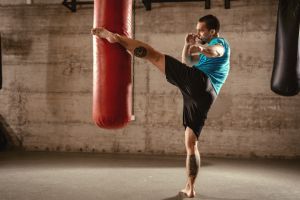 Kickboxing taught me how to use footwork to manage distance and move around my opponent. It is also a great way to avoid being punched or kicked. Most people that you are going to have to defend yourself against will not be trained fighters. They will often throw wild and telegraphed punches that, if you have good footwork, you can easily dodge and avoid.
Kickboxing taught me how to use footwork to manage distance and move around my opponent. It is also a great way to avoid being punched or kicked. Most people that you are going to have to defend yourself against will not be trained fighters. They will often throw wild and telegraphed punches that, if you have good footwork, you can easily dodge and avoid.
Most people will gas out in seconds after a half dozen or so wild punches, giving you the option to either run away or take them to the ground and restrain them until the police arrive.
Blocking
Sometimes footwork isn’t enough, and a punch or kick finds its way towards you. In these cases, you need to have the ability to deflect or block these strikes. This takes practice and only through live sparring will you become effective at blocking.
Body Puches
Punching someone in the face presents a couple of problems. The first being the potential damage to your hands and the second is that if you score a one punch knockout, your attacker may fall and hit their head causing permanent damage or death. This lands you in legal trouble that you do not need.
Instead, practice punches to the body, especially the liver. These strikes are painful but cause less damage. Often, they will result in your attacker doubling over giving you the chance to take them to the ground or escape.
Takedowns
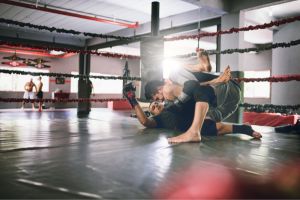 In a one-on-one fight that you can’t run away from, taking your attacker to the ground to control them is a great way to end the fight without hurting anyone.
In a one-on-one fight that you can’t run away from, taking your attacker to the ground to control them is a great way to end the fight without hurting anyone.
Jiu-jitsu and judo teach a lot of takedowns, but you should find a couple that work for you and are appropriate to use on concrete.
Shooting in for a double leg takedown on concrete will only give you damaged knees, but a head snap takedown will take your attacker down, is easy to do, and will give you a position of control.
Chokes
When defending ourselves we should not be aiming to permanently damage our attacker. Instead, we must have the intention of subduing them without harm.
Cardioid artery chokes such as a rear naked choke are great ways to render your attacker unconscious without causing any damage to them. They are easy to do, and very effective. Choking someone unconscious also allows you to get to a position of control on them while waiting for the police.
Joint Locks
To control someone, it helps to know a few joint locks to use pain compliance to keep them subdued. I personally like using a Kimura or a wristlock to hold someone in position through pain compliance.
Having to defend yourself with violence is a rare occurrence, but knowing how to defend yourself will allow you to go through life with confidence that if a bad situation arises, you can handle yourself. Above all else you must practice regularly and seek professional training if you are to be truly effective.
You may also like:
 Why You Need to Put Newspapers in Your Vegetable Garden
Why You Need to Put Newspapers in Your Vegetable Garden
The Most Common Security Mistakes You’re Probably Guilty of Too (Video)
4 Medicines Every Prepper Should Stockpile
How Far Away Would You Need to Be to Survive a Nuclear Blast
5 Pressure Canned Meals in a Jar
Read the full article here






